The art of mime, or acting without words, is a very important part of Sierra Nevada Ballet’s production of “Peanutcracker: The Story in a Nutshell,” which will be performed this year in both Carson City and Reno in early December. Ballet is an art form where thoughts and feelings are expressed through the movement of the body. It is always fun for me to hear the gasps from the young audience members as the first large rats bound onto the stage with large mime gestures or when the Rat King and Nutcracker mime a battle or when Clara distracts the Rat King through mime and saves the Nutcracker, turning him into a Prince.
In the original productions of the great 19th century ballets such as Giselle, Coppelia, Swan Lake and Sleeping Beauty stylized mime gestures were an important part of the choreography. Even though much of the emotion in ballet is often expressed through the actual choreography or dance itself, I believe there remains a place for the traditional mime gesture, especially in the story ballet classics where mime can be shown to have dramatic significance and beauty.
Classical mime is a language much like sign language, and since ballet is based on the French language, classical mime gestures occur in the same order as the words do in French. However, many of the traditional Ballet mime scenes have been preserved in English because the first Russian ballets were staged in England in the 1930s (using the original Stepanov notation) by Nicholas Grigorievich Sergeyev who left Russia after the Communist Revolution.
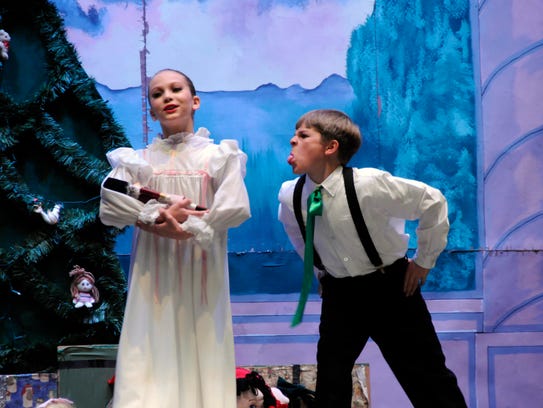 While many current Western productions of the 19th century repertoire marginalize the mime element, most still retain some of the original traditional scenes that have been passed down from generation to generation.
While many current Western productions of the 19th century repertoire marginalize the mime element, most still retain some of the original traditional scenes that have been passed down from generation to generation.
In the book by Beryl Morina, “Mime in Ballet,” former senior teacher for boys at the Royal Ballet School, Richard Glasstone, writes: “A gesture is a movement which conveys meaning and indicates a state of mind, whether, it takes shape of the formal, stylized ‘sign language’ of classical mime or the more naturalistic gestures found in modern ballets. Any such gesture must be performed with great accuracy if it is to register clearly with an audience. It must be precisely focused and strictly confined within a specific, limited area of movement.”
I have always been a fan of the ballet gesture and have had the opportunity to study classical mime from some amazingly gifted teachers, dancers and choreographers; during my 28-year stage career, I was often reviewed as a “dancing actress.”
My love of the art led me to search for more ways to teach mime to a younger generation of dancers. Through over 40 years of teaching ballet, I have developed a mime curriculum and have had the honor of presenting it at two American Ballet Theatre Summer Intensive Workshops in 2010. While there is often not enough time in the weekly ballet schedule to devote a class entirely to mime, SNB Academy frequently includes mime at the end of a ballet class and also offers periodical specialized mime classes and workshops. We find this practice helps young students gain confidence and express themselves better and also helps them improve as stage performers.
While there seems to be an ever-increasing emphasis on the more athletic aspects of ballet technique in today’s ballet world, it is my belief there will always be a need for the expressive, truthful gesture that conveys emotion from one human being to another. I am convinced the art of mime will continue to be passed down from generation to generation as part of the study of ballet.
Sierra Nevada Ballet performs “Peanutcracker: The Story in a Nutshell” in Carson City at the Community Center on Dec. 2 (school shows at 10 a.m. and 12 p.m.) and Dec. 3 (public shows at 2 p.m. and 4 p.m.) and in Reno at the Pioneer Center for the Performing Arts (school shows at 10 a.m. and 12 p.m.). The production features the company of SNB professional dancers augmented by over 80 young dancers from the Northern Nevada Community. For ticket information call 775-360-8663 or visit the website at www.sierranevadaballet.org.
Rosine Bena is the artistic director of the Sierra Nevada Ballet.
Reno Gazette Journal

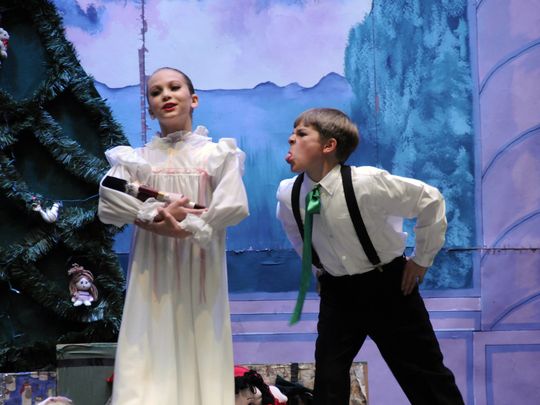
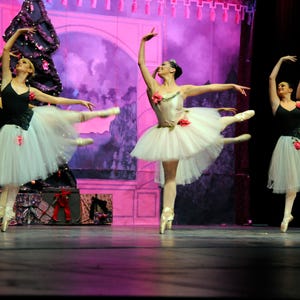
 Alexander Cain Biber (Principal Dancer/ Ballet Master/ Choreographer in Residence/Teacher) grew up in a performing arts family and has loved theater and performing from an early age. He began his ballet training, at the age of 14, with Rosine Bena at Western Nevada Performing Arts Center – studying ballet, jazz, tap, and musical theater. In 2003, Alexander became an apprentice with Sierra Nevada Ballet and was promoted to the first company in 2006, to soloist in 2008, and to Principal in 2012.
Alexander Cain Biber (Principal Dancer/ Ballet Master/ Choreographer in Residence/Teacher) grew up in a performing arts family and has loved theater and performing from an early age. He began his ballet training, at the age of 14, with Rosine Bena at Western Nevada Performing Arts Center – studying ballet, jazz, tap, and musical theater. In 2003, Alexander became an apprentice with Sierra Nevada Ballet and was promoted to the first company in 2006, to soloist in 2008, and to Principal in 2012. Jennifer Lightfoot-Johnson (Grant Writer and Development Consultant) comes to SNB with 16 years of experience, both professionally and as a volunteer, in grant writing and working in the nonprofit sector.
Jennifer Lightfoot-Johnson (Grant Writer and Development Consultant) comes to SNB with 16 years of experience, both professionally and as a volunteer, in grant writing and working in the nonprofit sector.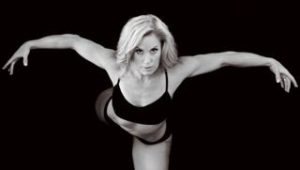 Jennifer Boyle August (Guest Teacher/Choreographer) discovered her love of dance in Reno, Nev. During her time at Reno High School, Jennifer took a Modern class at TMCC, with instruction in Graham, Luigi, and Horton dance technique. While Jennifer was educated in other areas of dance, she felt these styles spoke to her more than anything else. After graduating from Reno High School, she moved to Boston to study dance with Joan Palladino at Dean College where she received her Associate’s Degree in Dance. She was then hand-selected by Judith Jamison to study at Alvin Ailey Summer Dance Intensive program in New York City.
Jennifer Boyle August (Guest Teacher/Choreographer) discovered her love of dance in Reno, Nev. During her time at Reno High School, Jennifer took a Modern class at TMCC, with instruction in Graham, Luigi, and Horton dance technique. While Jennifer was educated in other areas of dance, she felt these styles spoke to her more than anything else. After graduating from Reno High School, she moved to Boston to study dance with Joan Palladino at Dean College where she received her Associate’s Degree in Dance. She was then hand-selected by Judith Jamison to study at Alvin Ailey Summer Dance Intensive program in New York City.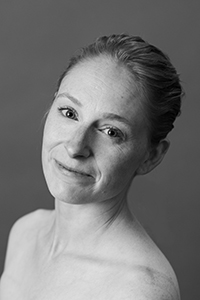 Sara Weir (Demi Soloist) was born in Provo, Utah, and started ballet at age three. She trained in dance with Trisha Wilstead at Rocky Mountain Dance and then trained with Brittany Squires and Heather Gray at Jaquiline’s School of Ballet. She performed professionally with Showcase and Theater Ballet at Brigham Young University, Utah Regional Ballet, and Sacramento Ballet.
Sara Weir (Demi Soloist) was born in Provo, Utah, and started ballet at age three. She trained in dance with Trisha Wilstead at Rocky Mountain Dance and then trained with Brittany Squires and Heather Gray at Jaquiline’s School of Ballet. She performed professionally with Showcase and Theater Ballet at Brigham Young University, Utah Regional Ballet, and Sacramento Ballet. Carlee Bertero (Soloist/ Teacher) was born in northern Nevada and began studying dance at an early age at Fascinating Rhythm School of Performing Arts in Reno. Carlee was invited to join the Sierra Nevada Ballet Apprentice program in 2012; was raised to the first company in 2013; to featured corps member in 2016, to Demi-Soloist in 2017, and to Soloist in 2021. She has performed in many SNB story ballets such as Peanutcracker-The Story In A Nutshell, Giselle, Swan Lake, Coppelia, Romeo and Juliet, Cinderella, Sleeping Beauty-A Fairy’s Tale, A Midsummer Nights Dream- A Steam Punk Ballet, and Twelfth Night-A Ballet Noir. She has performed as a featured dancer with SNB annually in Dancing By The River as part of Reno’s Artown Festival and in SNB’s annual Brew Brats and Ballet in Reno and Carson City.
Carlee Bertero (Soloist/ Teacher) was born in northern Nevada and began studying dance at an early age at Fascinating Rhythm School of Performing Arts in Reno. Carlee was invited to join the Sierra Nevada Ballet Apprentice program in 2012; was raised to the first company in 2013; to featured corps member in 2016, to Demi-Soloist in 2017, and to Soloist in 2021. She has performed in many SNB story ballets such as Peanutcracker-The Story In A Nutshell, Giselle, Swan Lake, Coppelia, Romeo and Juliet, Cinderella, Sleeping Beauty-A Fairy’s Tale, A Midsummer Nights Dream- A Steam Punk Ballet, and Twelfth Night-A Ballet Noir. She has performed as a featured dancer with SNB annually in Dancing By The River as part of Reno’s Artown Festival and in SNB’s annual Brew Brats and Ballet in Reno and Carson City.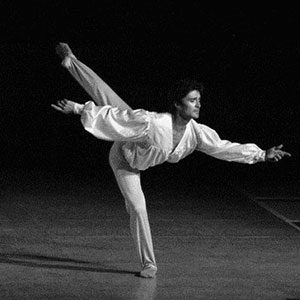 Domingo Rubio (Second Permanent Guest Artist/Guest Teacher) is SNB’s second Permanent Guest Artist as of May 2005. He has danced professionally for some 30 years. Domingo has danced with the Joffrey Ballet and Ballet Hispanico and was featured in the Robert Altman film, The Company. Rubio danced the role of Maxfield Parrish in SNB’s, A Painter’s Love Story and is a featured artist in SNB’s Dancing By the River and annual ballet classics.
Domingo Rubio (Second Permanent Guest Artist/Guest Teacher) is SNB’s second Permanent Guest Artist as of May 2005. He has danced professionally for some 30 years. Domingo has danced with the Joffrey Ballet and Ballet Hispanico and was featured in the Robert Altman film, The Company. Rubio danced the role of Maxfield Parrish in SNB’s, A Painter’s Love Story and is a featured artist in SNB’s Dancing By the River and annual ballet classics. Sam Weber (First Permanent Guest Artist/ Guest Teacher) is SNB’s first Permanent Guest Artist and is a founding member of the Company. He was one of the first permanent guest artists of The Reno Ballet under the direction of Rosine Bena. Weber danced with the Joffery Ballet, San Francisco Ballet, Sacramento Ballet, Peninsula Ballet Theatre, and The Jazz Tap Ensemble. Besides being a fine ballet dancer, Weber is considered one of the greatest tap dancers in the world. He is known as “the fastest feet in tap.”
Sam Weber (First Permanent Guest Artist/ Guest Teacher) is SNB’s first Permanent Guest Artist and is a founding member of the Company. He was one of the first permanent guest artists of The Reno Ballet under the direction of Rosine Bena. Weber danced with the Joffery Ballet, San Francisco Ballet, Sacramento Ballet, Peninsula Ballet Theatre, and The Jazz Tap Ensemble. Besides being a fine ballet dancer, Weber is considered one of the greatest tap dancers in the world. He is known as “the fastest feet in tap.” Gina Nelson (SNB Company Coordinator for Carson City and SNB Board Member) is originally from Napa Valley, Calif., and a long-time supporter of the arts and arts education. Gina worked as a crisis prevention specialist in a day treatment elementary school and was a counselor/teacher in a non-public school for at-risk boys.
Gina Nelson (SNB Company Coordinator for Carson City and SNB Board Member) is originally from Napa Valley, Calif., and a long-time supporter of the arts and arts education. Gina worked as a crisis prevention specialist in a day treatment elementary school and was a counselor/teacher in a non-public school for at-risk boys. Steven M. Porter (SNB Board President/SNB CEO) is a long-time devotee of the arts. Originally from the East Coast, Steve was raised with love and devotion to all the arts.
Steven M. Porter (SNB Board President/SNB CEO) is a long-time devotee of the arts. Originally from the East Coast, Steve was raised with love and devotion to all the arts. Cathy Mercer (SNB Company Coordinator for Reno/Managing Director/Board Member) grew up in Carson City and is a former dancer with a long-time devotion to the art form.
Cathy Mercer (SNB Company Coordinator for Reno/Managing Director/Board Member) grew up in Carson City and is a former dancer with a long-time devotion to the art form. Ananda Bena-Weber (Associate Director, Dance Artist/ Ballerina/Principal/Teacher) is a principal dancer and NY award-winning artist and the Associate Director of the Sierra Nevada Ballet and a founding member. She has danced professionally as a soloist with the Reno Ballet when it was formed in 1994/95 and 1996. She danced with Perspectives Dance Theatre and Fascinating Rhythm Productions. She has appeared as a featured soloist with Sam Weber performing in Morton Gould’s “Concerto for Tap Dancer and Orchestra” throughout the SF Bay Area. She has appeared in principal roles in several original dance works such as Take Me To The River and Blue Rondo, and classics such as Les Sylphides, Romeo and Juliet, and Paquita.
Ananda Bena-Weber (Associate Director, Dance Artist/ Ballerina/Principal/Teacher) is a principal dancer and NY award-winning artist and the Associate Director of the Sierra Nevada Ballet and a founding member. She has danced professionally as a soloist with the Reno Ballet when it was formed in 1994/95 and 1996. She danced with Perspectives Dance Theatre and Fascinating Rhythm Productions. She has appeared as a featured soloist with Sam Weber performing in Morton Gould’s “Concerto for Tap Dancer and Orchestra” throughout the SF Bay Area. She has appeared in principal roles in several original dance works such as Take Me To The River and Blue Rondo, and classics such as Les Sylphides, Romeo and Juliet, and Paquita.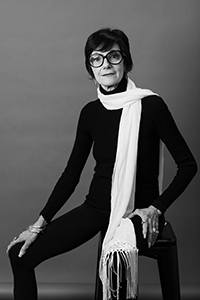 Rosine Bena (Founder and Artistic Director/Master Teacher)
Rosine Bena (Founder and Artistic Director/Master Teacher) Sophia Riella (Trainee) was born in Truckee, Calif. She started ballet at the age of two with Sherrie Petersen, Sierra Ballet School and continued there for six years while also studying Irish and Scottish Dance with Lindsey Marccaci in Lake Tahoe and at Truckee Dance Factory doing competition dance. She has also studied classical music, composing, and piano with Elaine Courtney and has studied voice with Stephanie McMoy.
Sophia Riella (Trainee) was born in Truckee, Calif. She started ballet at the age of two with Sherrie Petersen, Sierra Ballet School and continued there for six years while also studying Irish and Scottish Dance with Lindsey Marccaci in Lake Tahoe and at Truckee Dance Factory doing competition dance. She has also studied classical music, composing, and piano with Elaine Courtney and has studied voice with Stephanie McMoy. Erin Garman (First Year Company) began dancing at the age of 12 at Scene Stealers Theatre Arts where she trained in jazz, tap, lyrical, musical theatre, and ballet. She later began training with Fascinating Rhythm School of Performing Arts where she continued training in many styles and at Sierra Nevada Ballet Academy where she first met Rosine Bena, and started getting more serious about ballet, also dancing with Spiral Ballet.
Erin Garman (First Year Company) began dancing at the age of 12 at Scene Stealers Theatre Arts where she trained in jazz, tap, lyrical, musical theatre, and ballet. She later began training with Fascinating Rhythm School of Performing Arts where she continued training in many styles and at Sierra Nevada Ballet Academy where she first met Rosine Bena, and started getting more serious about ballet, also dancing with Spiral Ballet. Maya Macias (Trainee) was born in Houston, Texas into a military family. While her family was stationed in Memphis, Tennessee, at age two and a half years old, Maya began studying dance at the Children’s Ballet Theater because she wanted to go to “ballerina school. “ Maya continued her ballet training at Space Coast Ballet and when she was six years old, she began performing with Space Coast Ballet in the Nutcracker.
Maya Macias (Trainee) was born in Houston, Texas into a military family. While her family was stationed in Memphis, Tennessee, at age two and a half years old, Maya began studying dance at the Children’s Ballet Theater because she wanted to go to “ballerina school. “ Maya continued her ballet training at Space Coast Ballet and when she was six years old, she began performing with Space Coast Ballet in the Nutcracker. Olivia Mann (SNB Summer Demi Soloist) began studying at the age of four at Dallas Metropolitan Ballet, and the Dallas Ballet Center and later trained at Booker T. Washington for the Performing and Visual Arts.
Olivia Mann (SNB Summer Demi Soloist) began studying at the age of four at Dallas Metropolitan Ballet, and the Dallas Ballet Center and later trained at Booker T. Washington for the Performing and Visual Arts.
 Heather Rodriguez (Trainee) started dancing at nine years old in Corpus Christi, Texas. She continued studying Ballet, Contemporary, and Jazz throughout her childhood with Corpus Christi Concert Ballet.
Heather Rodriguez (Trainee) started dancing at nine years old in Corpus Christi, Texas. She continued studying Ballet, Contemporary, and Jazz throughout her childhood with Corpus Christi Concert Ballet.